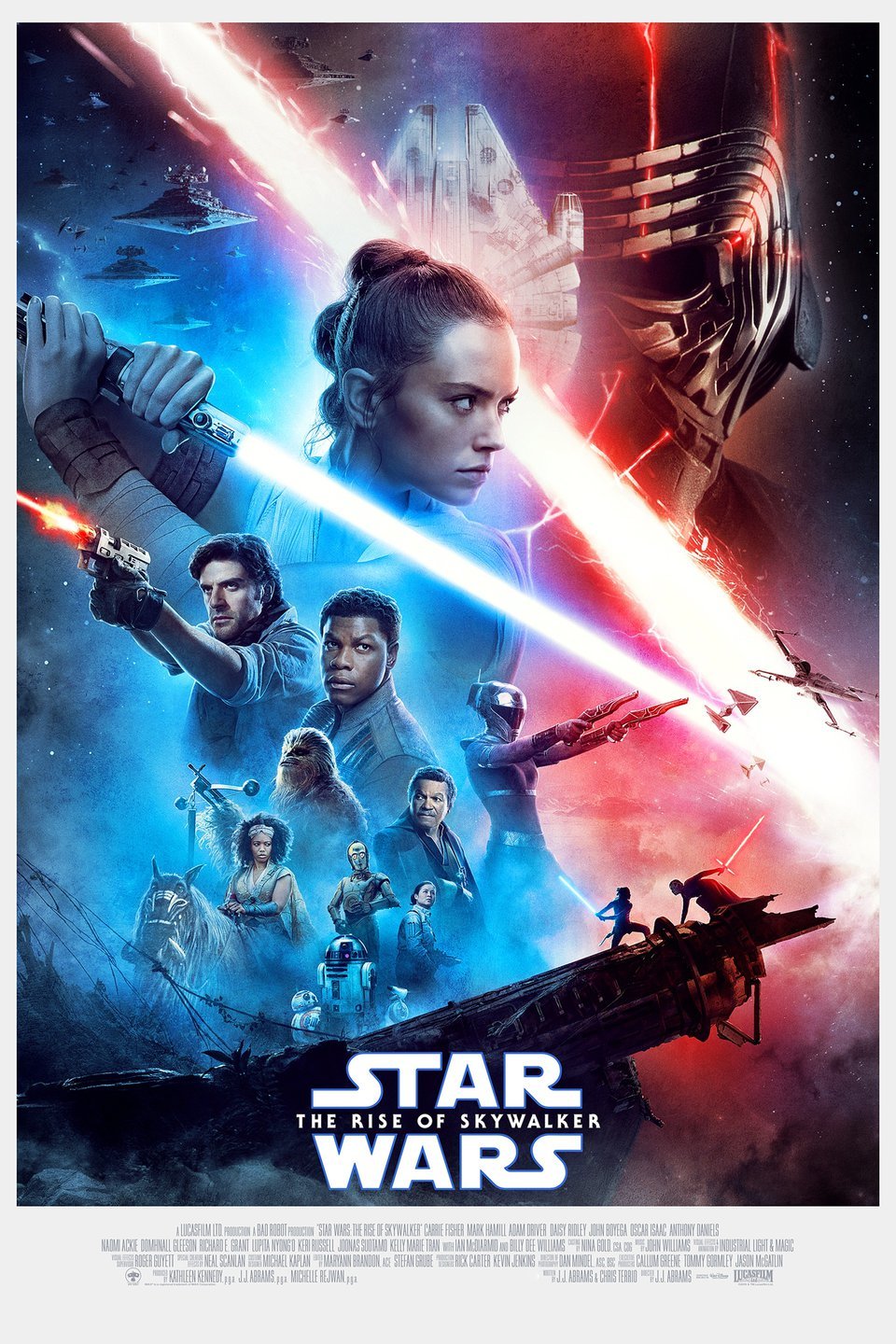Well, It’s Over
Well, it’s over—or at least it seems to be. The Skywalker Saga has concluded for the third time, this time with the sequel trilogy (The Force Awakens, The Last Jedi, and The Rise of Skywalker). Individually, I love these movies. They’re fun, visually stunning, and full of memorable moments. But in the end, the sequel trilogy disappointment lingers.
(Editor’s note: As time has passed, I actually don’t love all of them. I have complicated feelings about them.)
The sequel trilogy is a mess. While each film has its merits, the lack of a cohesive vision throughout the three movies is impossible to ignore. They don’t feel like three parts of a single story—instead, they feel like three competing ideas of what a sequel trilogy should be. It truly is a disjointed saga. And while there’s plenty to enjoy, the disjointed nature of the trilogy ultimately leaves fans like me disappointed.

That doesn’t mean it’s a bad trilogy. I know the ST has its haters, but I’m not one of them. I’m just terribly disappointed. I could watch them again. Maybe.
However, I’m sure I would not want to watch all three on the same day.
(Caveat: My wife would not have the same opinion…check out her Star Wars Fatigue Story).
A Tale of Two Halves
The Force Awakens was exactly what the franchise needed when it came out. It was nostalgic, fun, and introduced new characters while honoring the legacy of the original trilogy. Then, The Last Jedi pushed the story in a bold new direction. It explored deeper themes, such as the failure of legacy, the democratization of the Force, and the idea that hope can come from anywhere. It wasn’t afraid to challenge the audience, and while not everyone liked it (I have mixed feelings about it), there’s no denying it took risks.
But then comes The Rise of Skywalker, and that’s where the trilogy loses its way. It feels disconnected from the first two films, almost as if it’s trying to overwrite what came before. The bold ideas explored in The Last Jedi are pushed aside in favor of a safer, more nostalgic approach. And while it has its moments, it does little to tie the trilogy together as a cohesive story.
The Lack of Cohesion
The biggest issue with the sequel trilogy is the lack of a unified vision. Unlike the original and prequel trilogies, which were guided by George Lucas’s singular direction, the sequel trilogy feels like a game of creative tug-of-war.
J.J. Abrams, who directed The Force Awakens, set up a compelling mystery box filled with questions about Rey’s lineage, Snoke’s identity, and the state of the galaxy. Then, Rian Johnson came in with The Last Jedi and deliberately subverted many of those expectations. Rey wasn’t a Skywalker or a Kenobi—her parents were nobodies. Snoke was killed off without explanation. The story shifted focus from legacy to the idea that anyone could be a hero.
This creative handoff could have been successful if a plan had been in place from the beginning. But by the time Abrams returned for The Rise of Skywalker, it was clear there was no roadmap. Instead of building on The Last Jedi’s ideas, Abrams tried to course-correct, revisiting old plot points and reintroducing Emperor Palpatine seemingly out of nowhere.
As a result, the trilogy feels like a series of disconnected films rather than a single, cohesive story. Themes introduced in one film are abandoned in the next, character arcs feel incomplete or wasted, and the overall narrative lacks the resonance of the original trilogy.
Missed Opportunities
The disjointed nature of the sequel trilogy leads to a number of missed opportunities:
- Rey’s Arc: Rey’s journey is compelling, but it feels inconsistent across the trilogy. Her lineage is a mystery in The Force Awakens, dismissed in The Last Jedi, and then rewritten in The Rise of Skywalker. This back-and-forth undermines what could have been a powerful story of self-discovery and identity. Daisy Ridley shows up and makes it work, but there is only so much she can do.
- Finn’s Potential: Finn is introduced as a former stormtrooper grappling with his past and finding his place in the Resistance. But after The Force Awakens, his role diminishes significantly. His arc could have been one of the most unique in Star Wars, but it’s sidelined in favor of other storylines.
- Kylo Ren’s Redemption: Kylo Ren is one of the most interesting characters in the sequel trilogy, but his redemption feels rushed and unearned. While his character development is strong in The Last Jedi, his arc in The Rise of Skywalker feels like it’s missing key moments that would make his sacrifice more impactful.
- Rose Tico’s Role: After being a significant part of The Last Jedi, Rose is almost absent from The Rise of Skywalker. This sidelining of her character is one of the most glaring examples of how disjointed the trilogy feels. It also feels like it was a boardroom decision rather than an artistic one. And if it was an artistic one, shame on them.
What Could Have Been
The sequel trilogy had the potential to be great. It had a strong foundation with its new characters—Rey, Finn, Poe, and Kylo Ren—and introduced exciting new ideas. But without a clear plan or consistent vision, the trilogy falls short of its potential.
Imagine if the films had worked together to tell a unified story, with each installment building on the themes and ideas of the previous one. Rey’s journey of self-discovery could have been more impactful. Finn’s transformation from stormtrooper to Resistance hero could have been fully explored. Kylo Ren’s redemption could have been a powerful culmination of the Skywalker Saga.
Instead, we’re left with three enjoyable but disjointed films that fail to form a cohesive whole.
The Sins of The Rise of Skywalker
There are no rest beats. There are no frames that allow the audience to catch their breath. Worse, it’s the first film in which I can’t remember a single theme of John Williams’s (Star Wars or not) when I left the theater.
I don’t have a problem with the basic story, but an additional ten minutes of running time would have helped this film tremendously. Moreover, it would have helped tie the three films together.
I had no problem with Palpatine being behind everything, but I thought all of his scenes looked bad, which is strange for an Abrams film.
Not having Ben and Anakin as force ghosts was a missed opportunity. They are the soul of the Saga, and we deserve to see that Luke, Leia, and Rey’s efforts to save them were not in vain.
The worst thing was sidelining Rose. It was as if they wrote the screenplay and then remembered her.
In the end, my equal trilogy disappointment comes from the fact it was treated as the elementary game of telephone. It has characters, but it lacks a story.
Final Thoughts on the Sequel Trilogy Disappointment
Let’s face it, this trilogy is a disappointment.
The lack of a unified vision, inconsistent character arcs, and missed opportunities prevent the sequel trilogy from reaching the heights of the original and prequel trilogies.
Star Wars is at its best when it tells a cohesive, resonant story. The sequel trilogy had all the ingredients to do just that, but instead, it gave us a collection of disconnected ideas that never quite come together.
About The Author
Discover more from NolaNerdCouple.com
Subscribe to get the latest posts sent to your email.
